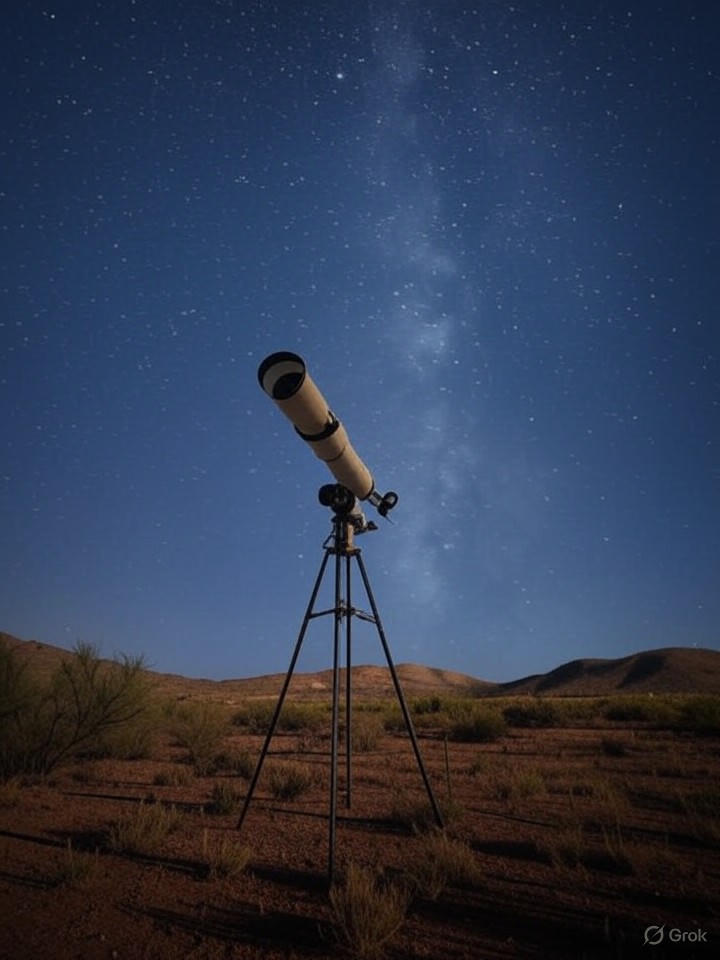Science
Starfront Observatories Transforms Amateur Astronomy Access

In the remote hills of West Texas, a groundbreaking initiative is reshaping amateur astronomy. Starfront Observatories offers enthusiasts the chance to remotely operate hundreds of robotic telescopes, effectively eliminating barriers such as light pollution and unpredictable weather. This innovative facility allows users to capture breathtaking images of galaxies, nebulae, and distant stars, all from the comfort of their homes.
Founded by a collective of dedicated astrophotographers, Starfront has rapidly become one of the largest remote observatories globally. Users send their telescopes to the site, where they are installed on stable piers under some of the darkest skies in the continental United States. For a monthly fee of approximately $100, users benefit from maintenance, power, and data links, enabling real-time imaging sessions from any location with a reliable internet connection. This model addresses significant challenges in amateur astronomy, making high-quality observations more accessible to a wider audience.
Innovative Remote Astronomy Solutions
Industry experts highlight that Starfront’s approach builds on previous remote hosting services but scales up dramatically. According to PetaPixel, the facility was developed by a group of photographers who pooled resources to create an observatory capable of hosting over 400 instruments. This collaborative effort not only reduces costs but also cultivates a network of shared knowledge among users, ranging from beginners setting up their first telescopes to experienced astronomers pursuing rare celestial events.
The technology utilized at Starfront is equally impressive. Automated domes protect telescopes from the elements, while advanced software facilitates scripted observations, allowing multiple targets to be queued overnight. High-bandwidth fiber optics ensure swift transfer of large image files, often spanning gigabytes, to users’ computers for processing. This setup draws comparisons to professional observatories, blurring the lines between amateur and institutional astronomy.
Challenges and Solutions in Astronomy
Despite its success, Starfront faces challenges. The rise of satellite constellations, particularly those from SpaceX’s Starlink, disrupt night skies and complicate long-exposure photography. An article from The New York Times outlines how astronomers are adapting with software filters to mitigate these disturbances. Starfront offers tools that allow users to schedule observations around satellite passes, preserving the quality of their data.
The remote location also presents maintenance challenges. On-site technicians manage everything from telescope alignments to dust removal, ensuring minimal downtime. Users report that this reliability has significantly increased their productivity, with many building portfolios that rival those from larger telescopes. Plans for expansion, including additional domes, indicate sustained demand for Starfront’s services.
From a business perspective, Starfront represents a strategic blend of technology and passion-driven markets. Subscription options start at around $100 per month for basic piers, with costs increasing for larger setups. This accessibility is attracting not only individuals but also educational institutions and small businesses, which utilize the data for research or commercial astrophotography services.
Broadening Educational Opportunities
Starfront is also inspiring the next generation of astronomers. The ability to access telescopes remotely enables schools in urban areas plagued by light pollution to conduct live astronomy sessions, exposing students to real-time celestial observations. Partnerships with platforms like Cloudy Nights forums enhance this experience by fostering a community where users share tips and insights, creating a vibrant online ecosystem.
Looking ahead, Starfront plans to integrate emerging technologies, including AI-driven image enhancement, which could automate much of the post-processing workflow. This advancement may lower the entry barriers further, allowing even casual users to produce images of publication quality. As space exploration initiatives ramp up, highlighted by upcoming missions from NASA, facilities like Starfront are set to play a crucial role in supporting ground-based observations alongside orbital telescopes.
While some critics express concerns about over-reliance on remote systems, arguing that hands-on stargazing fosters a deeper connection to the universe, many enthusiasts find Starfront’s blend of convenience and capability irresistible. The observatory stands as a beacon of innovation in Texas, ensuring that the stars remain accessible to all, regardless of their location or the challenges posed by light pollution.
-

 Lifestyle5 months ago
Lifestyle5 months agoLibraries Challenge Rising E-Book Costs Amid Growing Demand
-

 Sports4 months ago
Sports4 months agoTyreek Hill Responds to Tua Tagovailoa’s Comments on Team Dynamics
-

 Sports4 months ago
Sports4 months agoLiverpool Secures Agreement to Sign Young Striker Will Wright
-

 Lifestyle4 months ago
Lifestyle4 months agoSave Your Split Tomatoes: Expert Tips for Gardeners
-

 Lifestyle4 months ago
Lifestyle4 months agoPrincess Beatrice’s Daughter Athena Joins Siblings at London Parade
-

 Science4 months ago
Science4 months agoSan Francisco Hosts Unique Contest to Identify “Performative Males”
-

 World4 months ago
World4 months agoWinter Storms Lash New South Wales with Snow, Flood Risks
-

 Science5 months ago
Science5 months agoTrump Administration Moves to Repeal Key Climate Regulation
-

 Business5 months ago
Business5 months agoSoFi Technologies Shares Slip 2% Following Insider Stock Sale
-

 Science5 months ago
Science5 months agoNew Tool Reveals Link Between Horse Coat Condition and Parasites
-

 Sports4 months ago
Sports4 months agoElon Musk Sculpture Travels From Utah to Yosemite National Park
-

 Science5 months ago
Science5 months agoNew Study Confirms Humans Transported Stonehenge Bluestones









